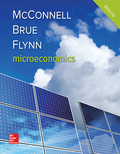
Subpart (a):
Gross income.
Subpart (a):
Explanation of Solution
The Gross income can be calculated as follows.
Gross income is $65,000.
Concept Introduction:
Gross income: It is an individual's income and the receipts from nearly all the sources.
Subpart (b):
Taxable income.
Subpart (b):
Explanation of Solution
The taxable income can be calculated as follows.
Taxable income is $51,900.
Concept Introduction:
Taxable income: It is the amount of income used to calculate an individual's or a company's income tax due.
Subpart (c):
New taxable income.
Subpart (c):
Explanation of Solution
New taxable income can be calculated as follows.
New taxable income is $46,000.
Concept Introduction:
Taxable income: It is the amount of income used to calculate an individual's or a company's income tax due.
Subpart (d):
Taxable income.
Subpart (d):
Explanation of Solution
Taxable income after the deduction can be calculated as follows.
Taxable income after deduction is $37,500.
Concept Introduction:
Taxable income: It is the amount of income used to calculate an individual's or a company's income tax due.
Subpart (e):
Tax payment.
Subpart (e):
Explanation of Solution
Table -1 shows the tax schedule.
Table -1
|
(1) Total Taxable income |
(2) Marginal tax rate, % |
| $0 - $17,850 | 10 |
| $17,851-$72,500 | 15 |
| $72,501-$146,400 | 25 |
| $146,401 - $223,050 | 28 |
| $223,051-$398,350 | 33 |
| 398,351- $450,000 | 35 |
| $450,001 and above | 39.6 |
Tax payment can be calculated as follows.
The total tax payment is $4,732.5. The tax rate for the last dollar is 15%. Thus, the marginal tax rate is 15%.
Concept Introduction:
Tax payment: It is the amount that an individual's or a company's income tax due.
Subpart (f):
Tax payment.
Subpart (f):
Explanation of Solution
The actual tax payment after the tax credit can be calculated as follows.
The actual tax payment is $3,732.5.
Average tax rate relative to the taxable income can be calculated as follows.
Average tax rate relative to the taxable income is 9.95%
Average tax rate relative to the total income can be calculated as follows.
Average tax rate relative to the taxable income is 5.74%.
Concept Introduction:
Tax payment: It is the amount that an individual's or a company's income tax due.
Want to see more full solutions like this?
- Please solve this, no words or explanations.arrow_forward17. Given that C=$700+0.8Y, I=$300, G=$600, what is Y if Y=C+I+G?arrow_forwardUse the Feynman technique throughout. Assume that you’re explaining the answer to someone who doesn’t know the topic at all. Write explanation in paragraphs and if you use currency use USD currency: 10. What is the mechanism or process that allows the expenditure multiplier to “work” in theKeynesian Cross Model? Explain and show both mathematically and graphically. What isthe underpinning assumption for the process to transpire?arrow_forward
- Use the Feynman technique throughout. Assume that you’reexplaining the answer to someone who doesn’t know the topic at all. Write it all in paragraphs: 2. Give an overview of the equation of exchange (EoE) as used by Classical Theory. Now,carefully explain each variable in the EoE. What is meant by the “quantity theory of money”and how is it different from or the same as the equation of exchange?arrow_forwardZbsbwhjw8272:shbwhahwh Zbsbwhjw8272:shbwhahwh Zbsbwhjw8272:shbwhahwhZbsbwhjw8272:shbwhahwhZbsbwhjw8272:shbwhahwharrow_forwardUse the Feynman technique throughout. Assume that you’re explaining the answer to someone who doesn’t know the topic at all:arrow_forward
- Use the Feynman technique throughout. Assume that you’reexplaining the answer to someone who doesn’t know the topic at all: 4. Draw a Keynesian AD curve in P – Y space and list the shift factors that will shift theKeynesian AD curve upward and to the right. Draw a separate Classical AD curve in P – Yspace and list the shift factors that will shift the Classical AD curve upward and to the right.arrow_forwardUse the Feynman technique throughout. Assume that you’re explaining the answer to someone who doesn’t know the topic at all: 10. What is the mechanism or process that allows the expenditure multiplier to “work” in theKeynesian Cross Model? Explain and show both mathematically and graphically. What isthe underpinning assumption for the process to transpire?arrow_forwardUse the Feynman technique throughout. Assume that you’re explaining the answer to someone who doesn’t know the topic at all: 15. How is the Keynesian expenditure multiplier implicit in the Keynesian version of the AD/ASmodel? Explain and show mathematically. (note: this is a tough one)arrow_forward
- Use the Feynman technique throughout. Assume that you’re explaining the answer to someone who doesn’t know the topic at all: 13. What would happen to the net exports function in Europe and the US respectively if thedemand for dollars rises worldwide? Explain why.arrow_forward20. Given the mathematical model below, solve for the expenditure multiplier for a) government spending, G; and b) for consumer taxes, T. (medium difficulty) Y=C+I+G C=Co+b(Y-T) 1 = 10 T=To+tY G = Go+gYarrow_forwardUse the Feynman technique throughout. Assume that you’re explaining the answer to someone who doesn’t know the topic at all: 11. What exactly is a rectangular hyperbola and what relevance is it to classical economics?arrow_forward

 Principles of Economics (12th Edition)EconomicsISBN:9780134078779Author:Karl E. Case, Ray C. Fair, Sharon E. OsterPublisher:PEARSON
Principles of Economics (12th Edition)EconomicsISBN:9780134078779Author:Karl E. Case, Ray C. Fair, Sharon E. OsterPublisher:PEARSON Engineering Economy (17th Edition)EconomicsISBN:9780134870069Author:William G. Sullivan, Elin M. Wicks, C. Patrick KoellingPublisher:PEARSON
Engineering Economy (17th Edition)EconomicsISBN:9780134870069Author:William G. Sullivan, Elin M. Wicks, C. Patrick KoellingPublisher:PEARSON Principles of Economics (MindTap Course List)EconomicsISBN:9781305585126Author:N. Gregory MankiwPublisher:Cengage Learning
Principles of Economics (MindTap Course List)EconomicsISBN:9781305585126Author:N. Gregory MankiwPublisher:Cengage Learning Managerial Economics: A Problem Solving ApproachEconomicsISBN:9781337106665Author:Luke M. Froeb, Brian T. McCann, Michael R. Ward, Mike ShorPublisher:Cengage Learning
Managerial Economics: A Problem Solving ApproachEconomicsISBN:9781337106665Author:Luke M. Froeb, Brian T. McCann, Michael R. Ward, Mike ShorPublisher:Cengage Learning Managerial Economics & Business Strategy (Mcgraw-...EconomicsISBN:9781259290619Author:Michael Baye, Jeff PrincePublisher:McGraw-Hill Education
Managerial Economics & Business Strategy (Mcgraw-...EconomicsISBN:9781259290619Author:Michael Baye, Jeff PrincePublisher:McGraw-Hill Education





